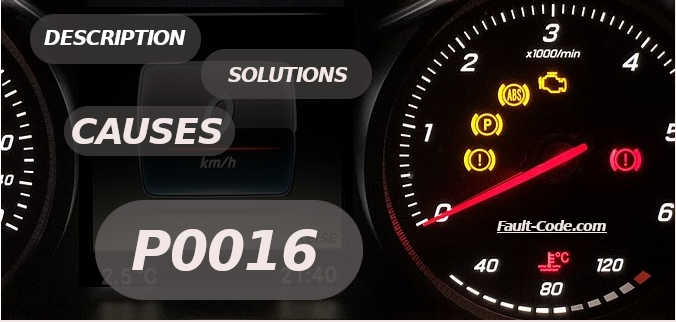What are the most common causes of code P0016?
In summary, the typical causes of code P0016 are the following:
- Defective crankshaft or camshaft sensor
- The camshaft or crankshaft sensor circuit is open or dense
- The timing belt / chain has jumped
- Phone ring/cam or crank pulse or crank is slipped / broken
- Problem in the VVT system
- The ECM is damaged
What does code P0016 mean?
The camshaft position sensor (EMP) is used to determine the position of the camshaft(s). It transmits this information to the drive control unit (ECM). The ECM then uses this information to control the fuel injectors, and in some applications, to measure the ignition. A crankshaft position sensor (CKP) transmits the crankshaft position and engine speed to the ECM or ignition module. This information is used, but the ECM is used to control the ignition time, and in some applications it is also used to control fuel injection.
Fault location
Position of the crankshaft / camshaft, sensor A correlation of row 1.
Crankshaft or camshaft sensor
Where is the P0016 sensor?
In most applications, the camshaft position sensor(s) are located in or on the valve cover to place the sensor(s) in close proximity to a reluctance ring or projection on the camshaft(s) that interrupts the magnets of the sensor(s) field to produce a signal. The crankshaft position sensor(s) may be located on the crankshaft pulley (also known as harmonic stabiliser), flywheel/flexible plate or on the fuel pump for some diesel engines.
How to solve problems with code P0016?
Perform a visual inspection of the sensors and connections.
Many problems can easily be found in the wiring harness and connectors. So start your diagnosis with a visual check of the sensors and their connections.
Check the output of the sensor
Sensor testing varies slightly depending on the type of sensor used by the vehicle.
Permanent magnet sensor: The permanent magnet sensor can be tested with an ohmmeter ( DVOM ). Disconnect the sensor connector and connect the meter to the sensor terminals. Consult the manufacturer for immunity specifications. Of course, the OL meter reading is open in the sensor and must be replaced. Then turn the motor and watch the ohmeter – the reading should change. You can also do this with the meter set to read AC voltage. If the reading does not change, the sensor is damaged and should be replaced.
Hall sensor: Using the vehicle repair information, determine which sensor connector contact is the signal return wire. Using DVOM on the DC voltage setting, probe the sensor cable again. Connect the black multimeter cable to the battery ground. When turning the motor, you should see the voltage changes on the meter.
Note that a damaged or incorrectly set tone ring will also prevent the sensor from working properly. If in doubt, remove the cam gear and crankshaft harmonic stabilizer and check the tone rings.












